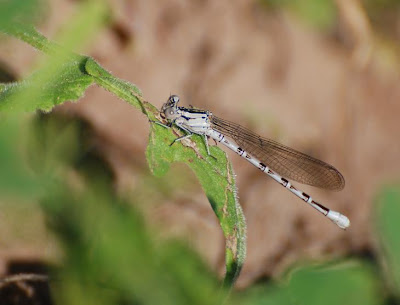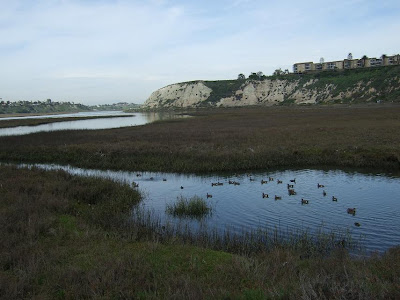On Saturday, I had the opportunity to attend a day trip to the Salton Sea with the Junior Naturalists from Sea and Sage Audubon. I was just there less than a month ago with my dad and John Garrett, but birding around the Salton Sea is always worthwhile and I reckoned we might find a few different birds. I was right.
Instead of taking the boring freeway route to the sea through Riverside, we decided to take a more winding route through the mountains and desert of San Diego County. I met Kate Grabenstein (the head of the Junior Naturalists) and Alison George (one of the other Junior Naturalists) at the Audubon House in Irvine and we quickly set out. We met up with a few other Junior Naturalists at a rest stop near Oceanside, where I actually found some of my best photo opportunities of the day. A bunch of tame California Gulls and Red-winged Blackbirds roamed the parking lot, posing nicely for the camera.


After a lengthy drive through the heart of San Diego County, we pulled into the parking lot at Ocotillo Wells in the Anza-Borrego Desert. Birds were not very plentiful in this arid region.

We took a quick stroll through the surrounding desert to view the plentiful wildflowers. In a short time we found a variety of flowers, some with illustrative names, including Sand Verbena, Arizona Lupine, Brittlebush, Desert Sunflower, and Brown-eyed Primrose.

I also came across this gaudily colored lizard here. I was hoping it would be an exciting one I’d never seen before, but a quick check in my reptile field guide revealed that it was a Common Side-Blotched Lizard. All the lizards I photograph turn out to be Western Fence-Lizards or something with “common” in its name…

We drove the last few miles through increasingly desolate habitat towards the sea. It wasn’t until late morning that we arrived at Unit One of the Sonny Bono Salton Sea NWR at the end of Vendel Road. The thousands of Snow Geese present last month were nowhere to be found. The lack of geese was somewhat disappointed, though we did find Loggerhead Shrike, Sora, and Clapper Rail as consolation prizes.

Our growling stomachs demanded food, so we drove on to Obsidian Butte for a picnic lunch. Perched on rocks above the beach, we studied gulls, shorebirds, and ducks while munching on sandwiches. Again, there seemed to be fewer birds than last month, but still plenty to keep us occupied. Once we finished, we packed up the remnants of our lunches and headed on to the headquarters of the Sonny Bono Salton Sea NWR.
The patches of trees and bushes around the refuge headquarters provide some habitat for land birds, which are generally relatively scarce around the Salton Sea because of the lack of trees. It didn’t take long to spot an Abert’s Towhee, a new species for several of the other Junior Naturalists, clinging precariously from a feeder by the parking lot.

We wandered through the trees by the headquarters and admired the Eurasian Collared, Mourning, and Common Ground-Doves waddling around all over the place. Gambel’s Quail, White-crowned Sparrow, and Verdin were also rampant. A ranger from the refuge headquarters appeared out of nowhere and asked, “Wanna see a Barn Owl?” Of course we did. He directed us to a palm tree by the parking lot, and sure enough, a lovely Barn Owl was tucked back behind some of the fronds.

The long loop trail around the refuge was too alluring to resist, so we spent at least an hour hiking the loop. We finally found a few hundred Snow Geese, along with some Ross’s Geese, feeding in the big field by the observation tower. There were lots of birds in the ponds and on the seashore, but nothing really new. It was a long and hot walk back to the cars.
Red Hill, perhaps the single most famous (and even infamous) site at the Salton Sea, was next on our agenda. I couldn’t resist taking some cheesy landscape shots here.

The birds did not disappoint at Red Hill. Thousands of gulls, shorebirds, and ducks swarmed all over the mudflats and water around the marina. In short order we spotted the first Dunlin, Western Sandpiper, Western Grebe, Marbled Godwit, and Long-billed Curlew of the day. With my scope I managed to spot a Yellow-footed Gull resting on a mudflat at least half a mile away. It was soon joined by a Glaucous-winged Gull. Alison and I took off across the mudflat, which was nice and dry in most areas but treacherously slimy in other parts, in order to obtain photos of the Yellow-footed Gull. When we finally drew close to the gull, we discovered there were actually two Yellow-footed Gulls.

We could have easily spent the remaining daylight birding at Red Hill (there are so many thousands of birds to sort through!), but everyone else was interested in seeing Burrowing Owls. We sped over to the intersection of Sinclair and Blair Roads were my dad, John, and I saw a pair in February. On the way we happened across a burned field covered in Mountain Plovers, which was worth a quick stop to scope out. We located the Burrowing Owls without any trouble.

By now light was fading as the sun slowly sank toward the hills to the west. Kate, Allison, and I (everyone else had headed for home by this point) made a quick stop at the Wister Unit to see what was around. We were treated to a lovely sunset over the sea. I attempted to document it, but my camera did wacky things to the background.

Daylight was almost entirely gone by now, but we decided to take a cruise down Davis Road to see if we could hear anything. An American Bittern flushed from a roadside ditch as we slid past, and a short distance farther down a Clapper Rail was calling incessantly from a small patch of cattails near the road. In just a few more minutes of birding, we heard several more Clapper Rails, a few Soras, and a Common Moorhen. Now birding in utter darkness, we left the Wister Unit to the howling Coyotes (there were many) and started the homeward journey. I finally got home around nine-thirty.
It was, as every jaunt I’ve taken to the Salton Sea has been, an awesome trip. I didn’t see any life birds, but everyone else got at least one. I just enjoy seeing the sea and all the birds it hosts. I can’t wait for my next trip over there, which probably won’t be until next winter; in the summer, the sea smells horrific and the temperatures are crushingly hot.











































